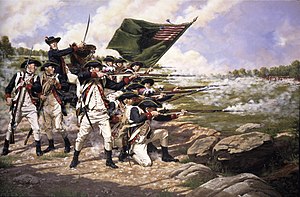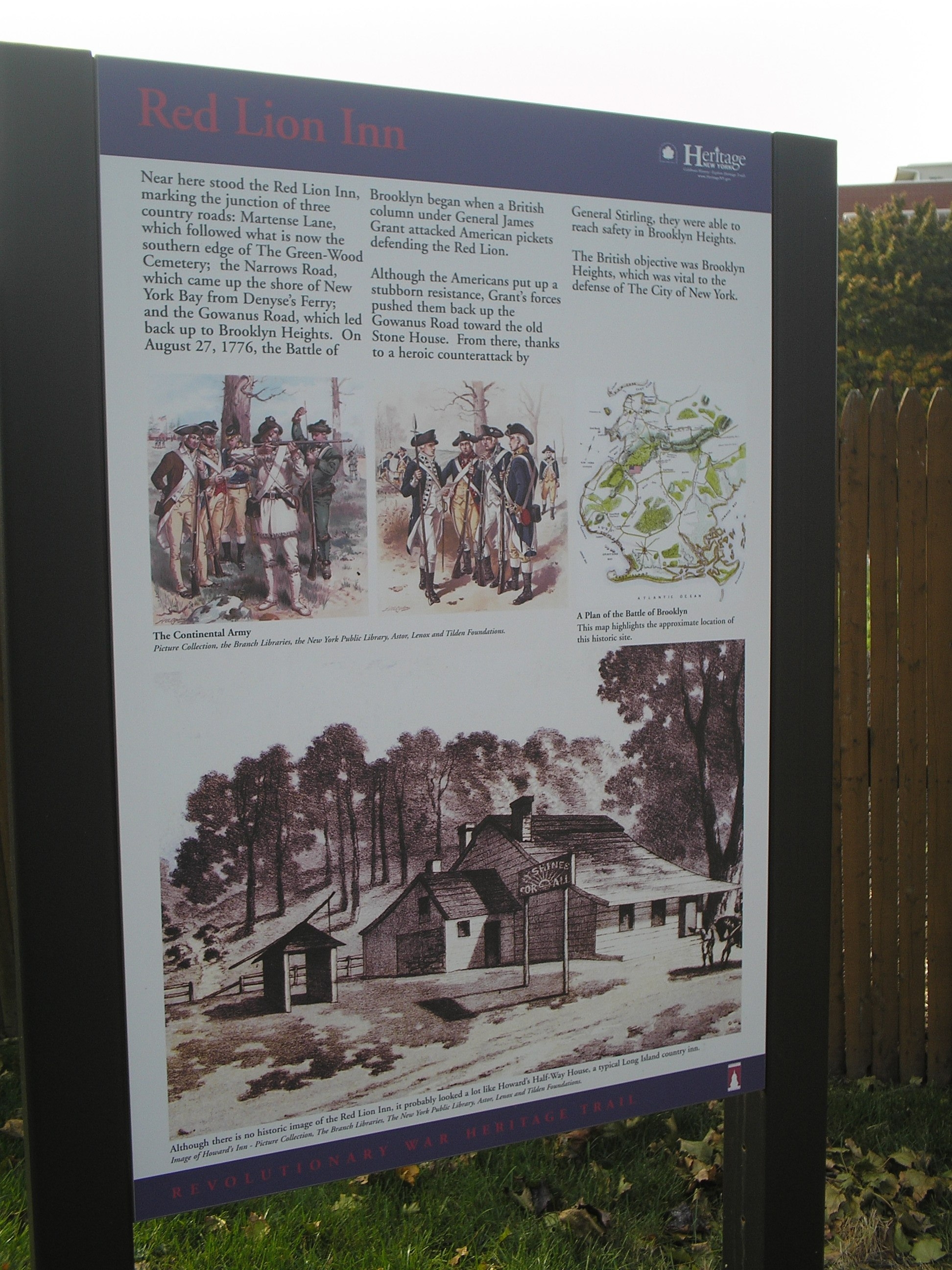Okay, sue me. I am the king of bad puns. But today, August 10th is Lord Howe's birthday so now let's move on to the subject at hand. With an overwhelming professional army, paid German mercenaries (world's better fighters), a large Loyalist following, real money, and the best navy in the world - how
could Lord William Howe lose his job, and set a trend that led to an impasse and ultimate defeat by the pitiful rebels in America? Howe assumed command of British forces at Boston in 1775, replacing General Gage, whose failures included Concord, as well as Bunker Hill. Howe's leadership set the course of British activity from then until his recall in early 1778. When his reinforcements arrived, he commanded the largest force ever committed by England in America during the times that tried men's souls...
 |
| William Howe |
Let us profile William, the 5th Viscount Howe before we discuss his demise. We can start with his origins. William Howe was born on August 10th, 1729 to the 2d Viscount Howe and Charlotte Von Keilmansegg, daughter of the Countess of Leinster and Darlington. That helped launch him and his two brothers on grand military careers. But it gets better - his grandmother was the illegitimate daughter of King George I. That made him a cousin to George III. Illegitimate or not - connections (plus land and title) counted for a lot in Georgian England. Howe (and his brothers) served their kinsman King during the Seven Years War (our French and Indian War). William rose to command the 58th Regiment of Foot as a lieutenant colonel. To say he served gallantly and efficiently is an understatement. At the siege of Louisbourg, in Nova Scotia, he led an amphibious landing that earned him a commendation. Howe's greatest achievement of the war (but not his last), was leading a force of elite light infantry up a steep and narrow trail that climbed the cliffs overlooking the St. Lawrence River. His bold gambit under cover of darkness surprised the French and enabled General Wolfe's army to defeat the Marquis de Montcalm on the Plains of Abraham outside of Quebec. This victory ultimately placed French Canada under British rule. Later in the war, Howe went on to other successes in Canada, France, and Cuba.
Howe's brother George ( general) died during the French and Indian War and William assumed his seat in Parliament in 1757. His politics were, as they said in those times, "Whiggish." The Whig party, while not liberal by today's standards, favored restrictions on the authority of the King. He was sympathetic to many of the grievances of the Americans and would maintain that sympathy throughout the American War for Independence. Assuming command of British forces besieged in Boston, Howe was promoted to lieutenant general in January 1776. Howe was a methodical planner and understood tactical, operational, and strategic warfare better than most of his contemporaries. To that end, he was ably assisted by his equally sagacious brother, Admiral Richard Howe. Richard, called "Black Dick" by the Royal Navy tars due to his swarthy appearance, was a bold and charismatic leader. With more reinforcements on the way, the Howes initiated a strategy of isolating New England from the other colonies rather than trying to conquer it. A grand naval maneuver moved his forces to Newport, Rhode Island, and from there made an "envelopment from the sea" on New York, via Staten Island and Long Island. This campaign provided the backdrop for my novel,
The Patriot Spy.
The Howe brothers put together multiple amphibious landings, sieges, sweeping flanking maneuvers under darkness, and won several pitched battles. Really a masterwork of combined arms warfare 18th-century style! Howe eventually occupied New York and drove Washington's army across the Jerseys in a blitzkrieg-like fashion. Howe liked Americans (but not rebels) So in the Jerseys, Howe's whiggish ways led him to attempt a clumsy form of rehabilitation that I believe, had it worked, might have ended the war. But it didn't, and his grand maneuvers, successful assaults, and (not so) hot pursuits ultimately ended in failure. To cap this off, Howe's decision to move south in his own campaign against the rebel capital at Philadelphia sealed General John Burgoyne's fate at Saratoga in 1777 and this proved the turning point (sorta) in the war.
Howe liked Americans so much he took one as his mistress. Mrs. Elizabeth Loring was the beautiful young wife of Loyalist schemer, Joshua Loring, who traded his wife's charms for a position as Commissary for Prisons, a post that offered Loring opportunities for graft at the expense of his charges. The starvation and disease that plagued American prisoners throughout the war attested to that fact. Howe's interest in his amiable companion led to accusations that she was causing him to tarry to the point of letting victory slip from the grasp of the victorious British. Many ribald poems and ditties were crafted by citizens and soldiers to celebrate the affair and poke fun at Howe.
One such ditty went...
Sir William he,
snug as a flea,
Lay all this time a snoring,
Nor dreamed of harm
as he lay warm,
In bed with Mrs. Loring.
And another...
Awake, arouse, Sir Billy,
There's forage on the plain.
Ah, leave your little filly,
And open the campaign.
So where did Howe fail? Simply put, he was not a closer - except, it seems, in bed. And he did not hold the respect of his two main subordinates, Charles Cornwallis and Henry Clinton. Howe did move at a ponderous pace at times. The blitz across New Jersey was led by the advanced guard under General Cornwallis. Throughout the campaigns under Howe, Cornwallis and Clinton chafed and complained that decisive follow-up was lacking in Howe. That Howe's slow approach enabled George Washington's beleaguered forces to escape time and again. Howe, sure of ultimate victory, preferred a methodical approach, all the while hoping the rebels could be reconciled. Although he outmaneuvered and outfought Washington from New York to Philadelphia, he never crushed him. Washington waited out two long winters in fear that Howe would come after his weakened Continental Army but escaped that fate.
 |
| Henry Clinton |
The surrender of Burgoyne's army sent chills from Horse Guards to Hampton Court. Parliament erupted. Professional armies cost money and the Royal Treasury was not without limits. Sensing the pressure, Howe resigned as the winter of 1777-78 was ending. His occupation of Philadelphia offered no strategic advantage to the British war aims and Lord George Germain, Minister for the Colonies, accepted his resignation. With Charles Cornwallis back in England to tend a dying wife, General Henry Clinton would assume command.
The story closes in a bizarre manner. Howe was sent off with a wild and expensive farewell party called the "Mischianza." This was a Bacchanalia-like mix of music, plays, exotic costumes, and exotically clad women. The event ended in a grand revue with fireworks and no small amount of food, drink, and reverie. The organizer of the event was Major John Andre, who would later become famous for his recruitment of the spy, Benedict Arnold. Many British officers attending the Mischianza felt it was an over the top display of luxury during a time of war and privation. Sir William Howe returned to England and continued to hold a series of relatively unimpressive posts until his death in 1814.






